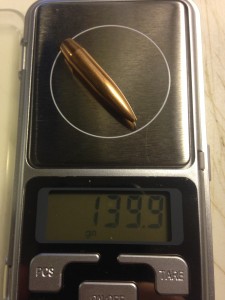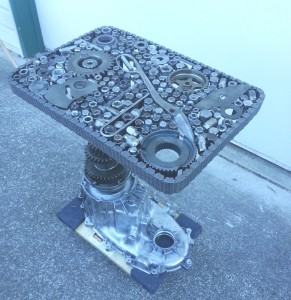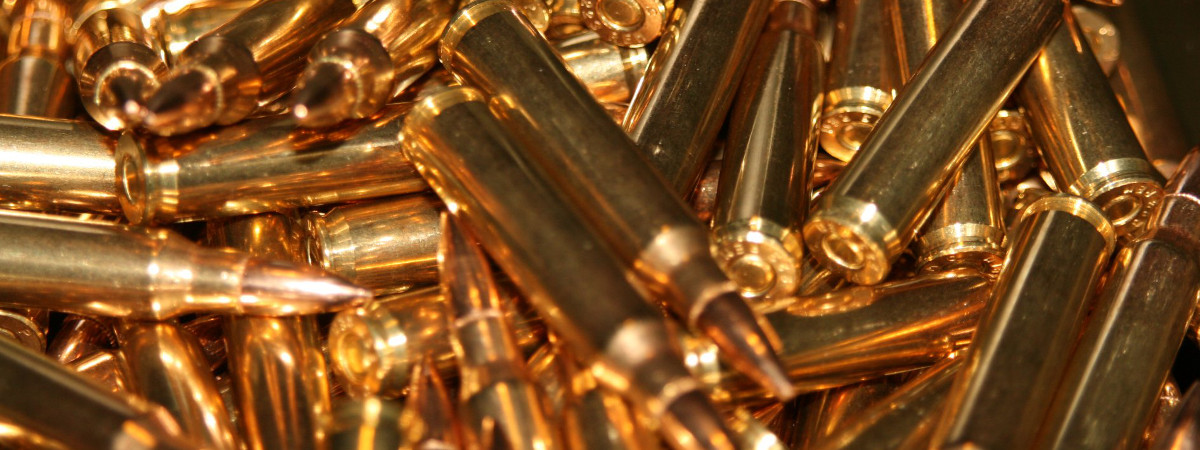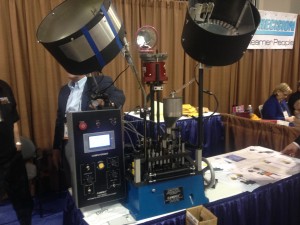The Belgian Corporal
by Neal Knox
In the summer of 1955, I was a young Texas National Guard sergeant on active duty at Fort Sill, Oklahoma. A corporal in my squad was a Belgian-American named Charles DeNaer. An old man as far as most of us were concerned, being well over thirty, Charley commanded a certain amount of our respect, for not only was he older than the rest of us, he had lived in Belgium when the Germans rolled across the low countries by-passing the Maginot Line on their way into France. He had seen war.
One soft Oklahoma afternoon, sitting on a bunk in the half-light of an old wooden barracks, he told me his story.
In Charley’s little town in Belgium, there lived an old man, a gunsmith. The old man was friendly with the kids and welcomed them to his shop. He had once been an armorer to the king of Belgium, according to Charley. He told us of the wonderful guns the old man had crafted, using only hand tools. There were double shotguns and fine rifles with beautiful hardwood stocks and gorgeous engraving and inlay work. Charley liked the old man and enjoyed looking at the guns. He often did chores around the shop.
One day the gunsmith sent for Charley. Arriving at the shop, Charley found the old man carefully oiling and wrapping guns in oilcloth and paper. Charley asked what he was doing. The old smith gestured to a piece of paper on the workbench and said that an order had come to him to register all of his guns. He was to list every gun with a description on a piece of paper and then to send the paper to the government. The old man had no intention of complying with the registration law and had summoned Charley to help him bury the guns at a railroad crossing. Charley asked why he didn’t simply comply with the order and keep the guns. The old man, with tears in his eyes, replied to the boy, “If I register them, they will be taken away. ”
A year or two later, the blitzkrieg rolled across the Low Countries. One day not long after, the war arrived in Charley’s town. A squad of German SS troops banged on the door of a house that Charley knew well. The family had twin sons about Charley’s age. The twins were his best friends. The officer displayed a paper describing a Luger pistol, a relic of the Great War, and ordered the father to produce it. That old gun had been lost, stolen, or misplaced sometime after it had been registered, the father explained. He did not know where it was.
The officer told the father that he had exactly fifteen minutes to produce the weapon. The family turned their home upside down. No pistol. They returned to the SS officer empty-handed.
The officer gave an order and soldiers herded the family outside while other troops called the entire town out into the square. There on the town square the SS machine-gunned the entire family-father, mother, Charley’s two friends, their older brother and a baby sister.
I will never forget the moment. We were sitting on the bunk on a Saturday afternoon and Charley was crying, huge tears rolling down his cheeks, making silver dollar size splotches on the dusty barracks floor. That was my conversion from a casual gun owner to one who was determined to prevent such a thing from ever happening in America.
Later that summer, when I had returned home I went to the president of the West Texas Sportsman’s Club in Abilene and told him I wanted to be on the legislative committee. He replied that we didn’t have a legislative committee, but that I was now the chairman.
I, who had never given a thought to gun laws, have been eyeball deep in the “gun control” fight ever since.
As the newly-minted Legislative Committee Chairman of the West Texas Sportsman’s club, I set myself to some research. I had never before read the Second Amendment, but now noticed that The American Rifleman published it in its masthead. I was delighted to learn that the Constitution prohibited laws like Belgium’s. There was no battle to fight, I thought. We were covered. I have since learned that the words about a militia and the right of the people to keep and bear, while important, mean as much to a determined enemy as the Maginot line did to Hitler.
Rather than depend on the Second Amendment to protect our gun rights, I’ve learned that we must protect the Second Amendment and the precious rights it recognizes.
Permission to reprint or post this article in its entirety is hereby granted provided this credit is included. Text is available at www.FirearmsCoalition.org. To receive The Firearms Coalition’s bi-monthly newsletter, The Knox Hard Corps Report, write to PO Box 3313, Manassas, VA 20108.
©Copyright 2009 Neal Knox Associates
The Belgian Corporal
Dogs
Dogs never die. They don’t know how to. They get tired, and very old, and their bones hurt. Of course they don’t die. If they did they would not want to always go for a walk, even long after their old bones say:” No, no, not a good idea. Let’s not go for a walk.” Nope, dogs always want to go for a walk. They might get one step before their aging tendons collapse them into a heap on the floor, but that’s what dogs are. They walk.
It’s not that they dislike your company. On the contrary, a walk with you is all there is. Their boss, and the cacaphonic symphony of odor that the world is. Cat poop, another dog’s mark, a rotting chicken bone ( exultation), and you. That’s what makes their world perfect, and in a perfect world death has no place.
However, dogs get very very sleepy. That’s the thing, you see. They don’t teach you that at the fancy university where they explain about quarks, gluons, and Keynesian economics. They know so much they forget that dogs never die. It’s a shame, really. Dogs have so much to offer and people just talk a lot.
When you think your dog has died, it has just fallen asleep in your heart. And by the way, it is wagging it’s tail madly, you see, and that’s why your chest hurts so much and you cry all the time. Who would not cry with a happy dog wreplica relojes agging its tail in their chest. Ouch! Wap wap wap wap wap, that hurts. But they only wag when they wake up. That’s when they say: “Thanks Boss! Thanks for a warm place to sleep and always next to your heart, the best place.”
When they first fall asleep, they wake up all the time, and that’s why, of course, you cry all the time. Wap, wap, wap. After a while they sleep more. (remember, a dog while is not a human while. You take your dog for walk, it’s a day full of adventure in an hour. Then you come home and it’s a week, well one of your days, but a week, really, before the dog gets another walk. No WONDER they love walks.)
Anyway, like I was saying, they fall asleep in your heart, and when they wake up, they wag their tail. After a few dog years, they sleep for longer naps, and you would too. They were a GOOD DOG all their life, and you both know it. It gets tiring being a good dog all the time, particularly when you get old and your bones hurt and you fall on your face and don’t want to go outside to pee when it is raining but do anyway, because you are a good dog. So understand, after they have been sleeping in your heart, they will sleep longer and longer.
But don’t get fooled. They are not “dead.” There’s no such thing, really. They are sleeping in your heart, and they will wake up, usually when you’re not expecting it. It’s just who they are.
– Author unknown
Where Are All The Reloading Components?
The most recent iteration of this phenomenon started back in December of 2012, and we have yet to see it completely resolve itself. While rifles, shotguns, and handguns are now almost back to “normal” levels in terms of availability, the cartridges themselves are still hard to find along with the components needed to handload them.
At the SHOT show this year I had the opportunity to gain some insights into the state of the industry. All of the major manufacturers and distributors had booths, as they normally do, but the number of new products was markedly down compared to past years.
I spoke with Kent Sakamoto, the RCBS Senior Product Marketing Manager for ATK. He said they’ve been focusing on production and haven’t spent much effort in R&D for small arms. The long and short of it is that all manufacturers, even the big ones like ATK, are months behind on orders. It could be up to a year before we see supplies start to equal demand across the board.
While there are shortages of components like brass and lead, the biggest problem is supplies of powder. This matches my own observations and inability to find the most common and popular smokeless powders.
Rob Behr of Western Powders, a distributor for Alliant and Norma among others, reiterated what Kent had told me. They are shipping to their retailers as fast as they can, but manufacturers are unable to catch up as of yet. We can expect to see brass and bullets become available first, followed by primers and finally powders.
What does this mean for you?
Basically, it’s time to hang tight for a little bit longer. As manufacturers catch up, we’ll see components stay for longer and longer on the shelves at retailers. This shortage is a bit different than those in the past in that we’ve seen across-the-board shortages of not just factory cartridges, but also components.
Many shooters who were caught flat footed in other recent shortages decided to get into loading their own. One could suppose that this is a good thing. It certainly helps us in the long run, but for now it also means that there’s more demand for the components that are available.
In the meantime, it might be prudent to work up some alternate loads. If your favorite powder is Varget, and it’s unavailable, look up a different load using something with a similar burn rate like IMR-4320 or Reloader 15. As always, don’t mix and match incompatible components, double check your recipe against your reloading manual, and of course start low and work up to your ideal charge.
Author’s Note: This article originally appeared in Western Shooting Journal.
Zen and the Art of Handloading
 “Ultimate excellence lies not in winning every battle, but in defeating the enemy without ever fighting.”
“Ultimate excellence lies not in winning every battle, but in defeating the enemy without ever fighting.”
– Sun Tzu
Handloading precision ammunition can be a tedious exercise in patience and attention to detail. It can also be a relaxing and rewarding hobby that turns out nearly identical rounds of impeccable quality. Precision shooters, especially benchrest shooters, value high quality ammunition. In many cases handloading is a prerequisite for benchrest because the calibers used are not commercially manufactured.
I don’t shoot 6mm BR Rem. or any other ammunition that I can’t find on the store shelves (excluding .22LR, but here’s hoping that shortage doesn’t last much longer) yet I still appreciate a well made cartridge. Premium rounds, even in common calibers such as .308 or .270, command prices well in excess of $1.50 per round. You could go to the store and buy it off the shelf, or order it online, but I find the pride of turning out the rounds themselves to be well worth the time and effort.
Nestled down in the back of the garage at my workbench is my meditation zone. It’s a quiet place, free from distraction and noise. There’s no TV, and I leave my smart phone in the house. The accommodations are spartan. Concrete floors, a simple stool, and a large unfinished wooden workbench topped with various presses, bins, scales, tumblers, trimmers, a work light, and various other accoutrements are all that occupy this space.
My wife has her art room, and I have my garage. It’s here in my little refuge where I can still my mind and focus on the little things. I’ll start by setting up the press and organizing my components and tools for whatever caliber is being loaded. Today we’re doing 6.5×55 SE loads.
“To a mind that is still the whole universe surrenders.”
– Lao Tzu
First the bullets are sorted. One by one each Sierra Match King HPBT is weighed and measured on the Frankford Arsenal scale. Ideally each one should be exactly 140 grains and measure 0.264 inches in diameter. In reality, there is a bit of variation, however slight. Bullets weighing 140.1 grains go in one bin, 140.0 in another, and those weighing 139.9 go in yet another.
This task complete, it’s time to remove the brass that have been getting cleaned and polished in the tumbler. Cases that were split or cracked have already been discarded. The corncob media mixed with a bit of polishing compound has left the remainder gleaming. Once again it’s time to visually inspect every case. Those that show any sign of damage or overpressure are discarded. Check the thickness of the brass at the neck with a digital micrometer. Brass that is too thick, usually old military brass, is set aside to be loaded for plinking. Brass that is too thin is discarded.
Each case is then rolled across the RCBS lube pad, essentially a repurposed stamp pad impregnated with case lube, using just enough pressure to get a thin coating on the case. Too much pressure means too much lube, and that can dimple the brass. Thus properly lubed the brass is run through a full-length decapping and resizing die. Turn it 90° in the shell holder. Run it through the die again. Inspect the brass once more for any dimples or other damage caused or revealed by resizing.
Now it’s time to check the primer pocket and flash hole. Clean and, if necessary, ream the primer pocket. Then the digital calibers come out again, along with the case trimmer. In this case we’re trimming a little long: a short distance between the bullet and the rifling helps to improve accuracy. The micrometer shows 2.168 inches. That’s a little too much, so into the trimmer it goes. Measure again, and then trim a tiny bit more. Finally the digital readout indicates 2.160: the perfect case length for this chamber. This process continues over and over through case after case with each one getting chamfered and deburred. The inside of the throat and neck is meticulously cleaned and lightly lubed before the brass is set into the shell holder.
“Life is available only in the present moment.”
– Thich Nhat Hanh
Once all of the brass has been prepared in this manner each one is carefully fitted with a CCI No. 200 large rifle primer. Every primed shell is checked for proper primer depth. Primers that have been mashed sideways or have an improper depth are removed and discarded in a tin can.
The 49.0 grains of Alliant’s Reloader 19 powder is next to be added, but a simple powder drop will not suffice. Instead a scoop and powder trickler allows precisely the correct amount of charge to be loaded into each round. This, combined with the short leade, should give just enough pressure to launch a bullet at just over 2,900 feet per second.
Those bullets, of course, are next. Only the ones from the bin marked “140.0 grains” will be loaded. The rest will be used for plinking. Round after round is carefully seated and the overall length checked before the bullet is crimped into place in another die.
Slowly the ammunition case fills with perfection. Each round is identical to the other, or at least as close as is humanly possible. Finally done, I stop to inspect my handiwork. My eyes are sore, and my back too, but my mind is still and I am satisfied.
Author’s Note: This article originally appeared in Western Shooting Journal.
Furniture
No, not gun furniture. Office furniture.
 We’re remodeling my home office and tossing out a bunch of old furniture (read: old flat-pack desks and bookshelves bought when I was a poor college student) which means we need new furniture. I’ve got the new book cases picked out (glass fronted barrister-style antiques) as well as the sofa, but then I happened across Phil’s little project, and I just had to buy it.
We’re remodeling my home office and tossing out a bunch of old furniture (read: old flat-pack desks and bookshelves bought when I was a poor college student) which means we need new furniture. I’ve got the new book cases picked out (glass fronted barrister-style antiques) as well as the sofa, but then I happened across Phil’s little project, and I just had to buy it.
That’s a custom built table, lovingly welded together. Phil’s been taking welding classes and put these tables together for practice, and to raise a little cash. Having been a poor broke student, I understand where he’s at. Also, those are some badass little heavy-weight tables!
Phil has another one, and is building more, so go check them out and send him an email if you’re interested in one.
Reloading for Fun, and Profit?
![IMG_0224[1]](https://amongtheleaves.com/wp-content/uploads/2014/07/IMG_02241-300x225.jpg) Many people claim to have started reloading their own ammunition because of the ever increasing prices of factory produced cartridges. Is this really viable? Can you save money by loading your own plinking rounds for use at the range or during training?
Many people claim to have started reloading their own ammunition because of the ever increasing prices of factory produced cartridges. Is this really viable? Can you save money by loading your own plinking rounds for use at the range or during training?
Let’s look at some numbers. For our purposes, we’ll look at 9mm and .223/5.56mm since these are very common calibers in use today. A bit of research shows that 9mm can be found priced between $0.25 and $0.30 per round, with the less expensive available in bulk packs of 500-1000 rounds.
Assuming you already have the necessary equipment to load your own rounds, how much do the individual components cost? Midway USA offers 2000 rounds of 115-grain bullets for $224.99 for a total cost of $0.11 per bullet. Tula small pistol primers can be had at a cost of $115.99 for 5000, which comes to $0.02 per round. A load of 6.5 grains of Alliant’s Power Pistol should give our hypothetical load a muzzle velocity of around 1200 FPS in a handgun. A four pound keg will set you back around $63.99 and net a cost of around $0.01 per round.
If we go on to assume that you have your own brass, or can scrounge some up for free somewhere, then your total cost per round is $0.15 (rounded) or about half the cost of factory ammo. Not bad, right? Not so fast. These prices don’t include shipping and the required hazmat fee. It’s possible, though unlikely, that you can find similar prices at your local retail shop, so let’s go with these numbers for now.
How much did your reloading press cost? Dies? Scales? The list of equipment needed is quite long, but we’re spit-balling here so let’s just say you found everything you need at a garage sale for the low price of only $250. If that’s the case, your break-even point comes around 1650 rounds. If you have to buy brass for those cartridges, the break-even point doesn’t come until you’ve loaded over 2500 rounds.
For .223/5.56 ammunition the numbers are similar. If you already have your own brass, it’s possible to load rounds for about $0.17 each. That cost jumps to $0.37 per round or more if you have to buy once-fired and even more for new brass. Factory prices for .223 and 5.56mm ammunition in bulk run from $0.28 to $0.30 per round if you can settle for steel cased ammunition. Brass cased cartridges can still be found for as little as $0.35 each.
If you’re out of .223 or 5.56 brass, you’re out of luck: loading your own is a losing proposition. This is partly due to the replicas panerai presence of enormous amounts of military surplus ammunition. Still, if you do have your own cases you can save a few bucks by reloading. Using our hypothetical $250 setup your break-even point still won’t come until you’ve loaded more than 2000 rounds.
Don’t forget to factor in your own time when running your own numbers. Time is valuable, and depending on the type of press you’ve got it can take quite a while to clean, prep, and load those thousands of rounds. You can save time with a faster progressive press, but this increased cost will mean that your break-even point doesn’t come until much later.
It’s also important to consider how much you shoot. If you’re like most, you might only go through a few hundred rounds a year. Avid shooters might fire a couple of thousand rounds, while serious competitors and those seeking intensive training might fire upwards of ten thousand rounds. If you only plink occasionally it could easily take you years to recoup the cost of investing in a reloading press.
Where do you fall? Take the time to crunch some numbers on your own. The prices laid out here are just an example, and will vary depending on what caliber you consider as well as your locale. It’s certainly feasible to save quite a bit of money loading your own ammunition. If you shoot frequently, or just want to have a nice stockpile of a few thousand rounds, reloading just may save you a buck or two.
To calculate your own savings visit this handy calculator at Handloads.com.
Author’s Note: This article originally appeared in Western Shooting Journal.
Another SB15 Build
…this time from Say Uncle who put together his SB15 based pistol using an Aero Precision lower, Karris 10.5″ upper, and various MagPul goodies.
Go check it out.









